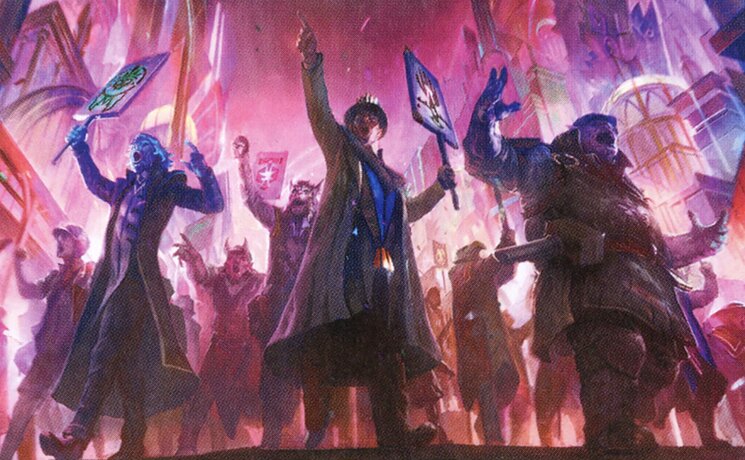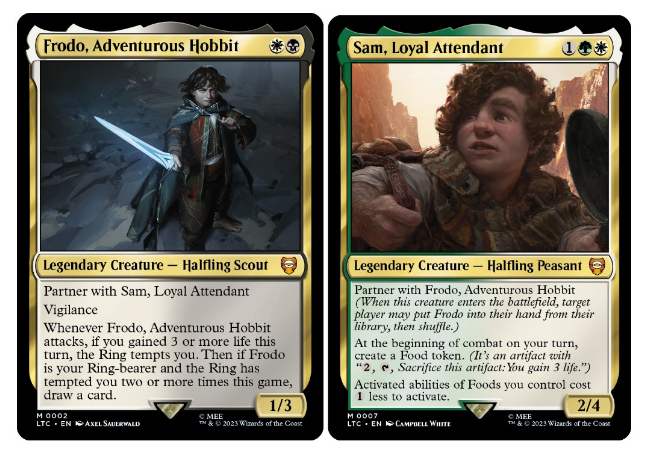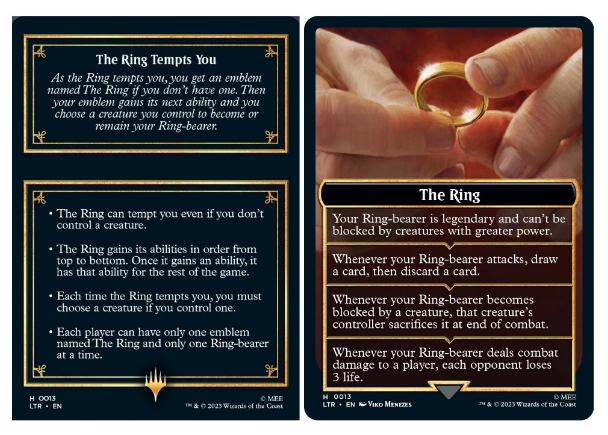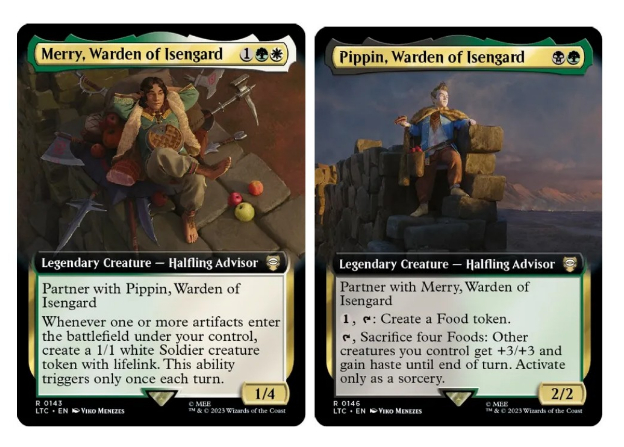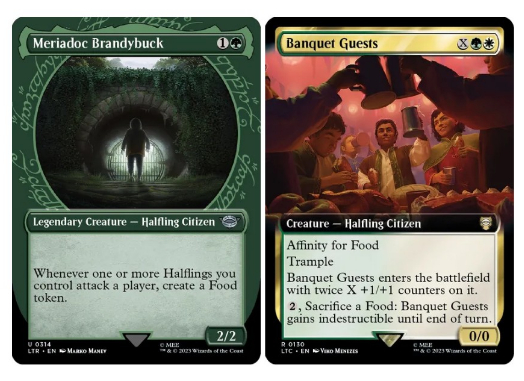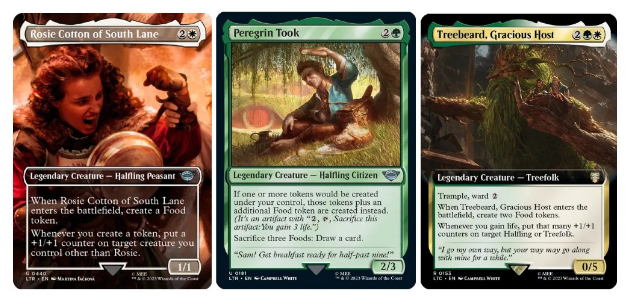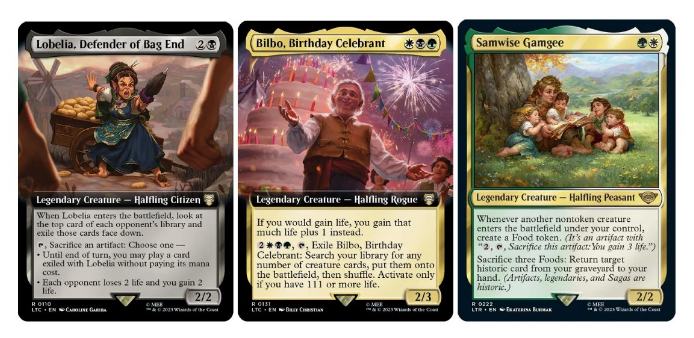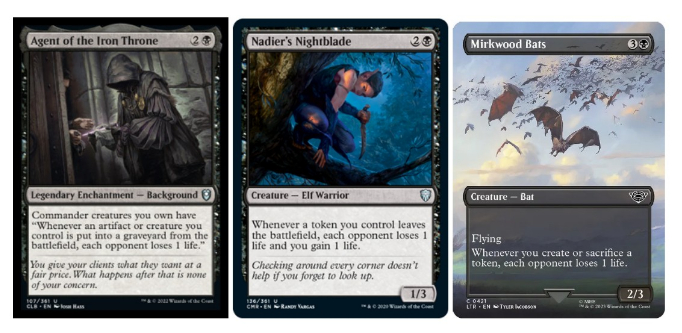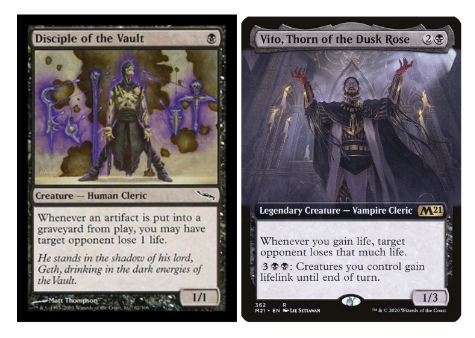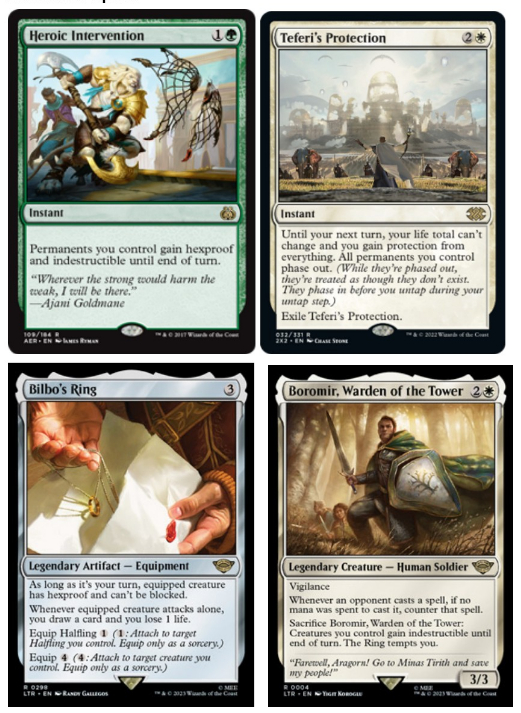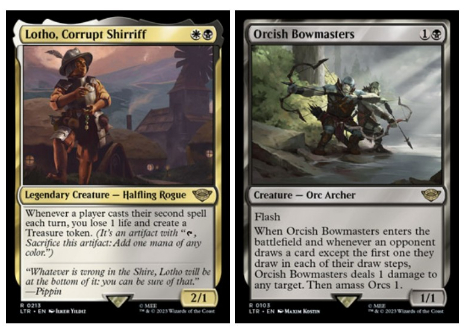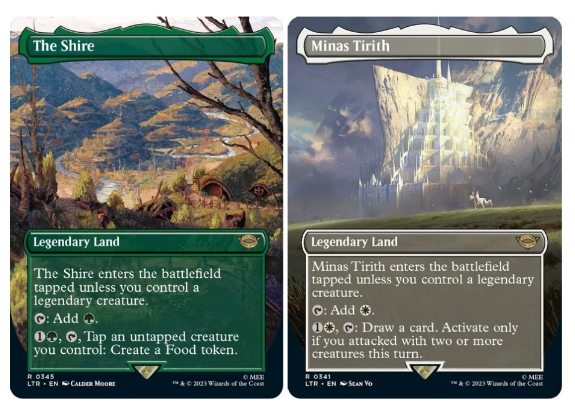There is little question that Magic: The Gathering players, speculators and vendors are facing a new era in the game we love. Print runs, release schedules and reprint cadence are all up and competitive tournament support, sealed product prospects and Hasbro staff rosters are down. A community once dominated by Standard, Modern and Legacy players has now morphed into an EDH driven market surrounded by a double handful of smaller formats. Crypto hype echoes across the collectibles markets, exacerbating the boom and bust cycles.
Gone are the days when a Magic player could reliably sit on almost any sized collection of singles or sealed products and reasonably expect that the value of that cardboard treasure hoard would simply go up and to the right.
Instead we are forced to confront the simple fact that now, perhaps more than ever, the people that make the game we love are under significant pressure to make more and sell more, without much regard for the longer term consequences. In many ways we can lay this at the feet of late stage capitalism, as the obsession over revenue and profit growth leads to bonus chasing executives making decisions that help short term graphs without considering player growth, player commitment, or the health of the game.
And yet, if we intend to make and save money playing this game that we love, we must still find a way to navigate through. So what do we do?
Singles Aren’t Dead, But They’re Injured
There isn’t any way around it. Magic singles speculation is just more risky than it used to be, even when you do everything right. Sure, I’m having my best year ever for singles sales, but that doesn’t mean it’s easy or automatic.
WoTC is simply putting out more products, more often, and with a greater focus on premium sets and direct to consumer sales via the Secret Lair product line. This results in dozens of more reprints on key staples throughout the year. What’s more, even a recent reprint doesn’t necessarily guarantee that your spec will be left alone, as we’ve seen multiple examples of cards getting double tapped within the same calendar year.
As such, any given basket of intelligently selected staples can be expected, on average, to produce a lower margin than it did five or ten years ago. Does that mean that Magic singles are simply untenable for speculation purposes? Well, no, despite the talking heads that are making money generating content that will tell you otherwise .
The reality is that from any reasonable perspective Magic is in the strongest position it’s ever been. The shift to Secret Lair products cuts out most of the middle men, boosting profits. Overall revenues and profits are at all time highs, and the Lord of the Rings set was likely the best selling Magic product of all time, generating massive amounts of free press coverage as players rushed to find the precious. Partnerships with major entertainment brands via the Universes Beyond might dilute the narrative of the game, but it also expands the reach of the brand and pulls in fresh interest that otherwise seemed hard to reach. EDH is the king of formats, encouraging players to build massive collections and featuring a natural rotation of archetypes and a self-regulating power level.
And take it from someone that sifts through the data each and every week to see what’s gaining ground: there are simply hundreds if not thousands of relevant price increases on Magic singles every year even in the midst of the era of reprints. (And naturally, there are just as many cards that lose ground.)
There are new cards still in print that take off due to meta shifts. There are niche cards that get activated by the hot new commander of the month, providing a strong selling window that collapses a few months later. There are premium versions of cards that have plenty of printings that can shake off reprints as the best chase version available and accelerate when put under the spotlight. Smuggler’s Copter gets unbanned and turns into a rocket ship. Many Planeswalkers have simply never received a reprint at all, and with the recent narrative shift away from them in general, this trend is unlikely to reverse. Sol Ring gets infinite reprints, but the players still float the Masterpiece Invention version over $650.
There are also still plenty of cards that go 2-5+ years without a reprint, and another group that are simply unlikely to ever get a reprint for one reason or another. The simple fact is that as the card pool gets larger and larger, even the new reprint cadence cannot keep pace with the entire pool of staples and niche cards that are needed by players across multiple popular formats.
On the other hand, your bread and butter EDH staples are very likely to be kept in print in one form or another more or less constantly. Cards like Smothering Tithe, Rhystic Study and Doubling Season have to be assumed to be within a year of another reprint at any time and that absolutely impacts how you should approach their presence in your inventory.
Another major source of risk is power creep leading to prior staples falling out of a key meta like Modern. With a Modern Horizons set being delivered every two years at this point, and a generally high power level expected next summer in MH3, there’s a good chance that a card that seems like a good spec today will end up forgotten by next fall.
And yet, there are FAR more Magic cards worth more than $10, $20, $50 or $100 now than there have ever been, in large part due to the increase in premium treatments and lottery cards at distinctly low print runs. EV continues to drain from regular printings to premiums, resulting in solid access to key staples at lower prices that no player should complain about. The singles market is far from crashing, but it’s a different beast for sure.
All of this adds up to a need to stay on top of things if you want to succeed.
Focus on Scarcity
The collectibles market has long pivoted on scarcity. To wit, the entire industry rides the tension between supply and demand, always trying to maximize profit by producing as much as possible without crashing the market and eliminating the demand. From comics, to beanie babies, retro video games, and 80s action figures to the dozen or more prevalent cards games that survive alongside Magic, Pokemon and Yugioh, there’s always a scarcity driven market to collect and profit in, and always a risk that it will all go sideways.
As such, it behooves us to pay close attention to what parts of the Magic product line are more scarce than others. Time Spiral Remastered, ONE Compleat Bundles, and 40k Premium decks all spring to mind as examples of sealed product that caught some folks flat footed and made others healthy returns on the flip.
You also have to watch for products where demand is so high it makes even high print run items seem scarce. The Lord of the Rings Collector Boosters were strongly profitable before the 1/1 ring was found, when sourced intelligently. Some of the forthcoming Marvel x Magic releases over the next few years may well behave in similar fashion.
On the other hand, there is little evidence that buying most Draft, Set or Collector Booster boxes for a long term hold is a good idea as very few are holding a price tag above their original retail lows. The shift to even more expensive Play Boosters in 2024 is unlikely to improve this scenario. And while I have heard rumors that CB releases are going to be more limited, I’ll believe it when I see it.
Focus on Strong Art
One of the hallmarks of the Booster Fun era has been a strong commitment by WoTC to lean into alternative art treatments and work with world class artists capable of generating significant demand.
Some of the best examples of strong art leading to profit can be found in a carefully curated selection of Secret Lair releases. What do all of the below releases have in common? They far surpassed financial expectations because people simply loved the art and/or theme of the release. Plenty of Secret Lair releases do not achieve profitability in a reasonable time frame, but enough of them do that leveraging the frequent 18-30% discounts for mass ordering can often be a solid move.
Alternate art cards have also been some of the few things in the game to avoid specific reprint risk….so far. An Artist Masters set in 2027 wouldn’t surprise me at all, but until then, fantastic alt art cards are going to be one of the best bets for gains.
Overseas arbitrage
At present the JPN Yen is near historic lows against the US dollar, resulting in some fantastic opportunities to pick up relevant singles on the cheap. Many Japanese stores stock both English and Japanese copies of recent singles, so even if you aren’t comfortable selling Japanese cards on Ebay (a tactic I leverage regularly for strong profits), you can still stock your stacks. Shipping from Japan was very tricky due to COVID restrictions a couple of years back, but is now back to their typical quick and cost effective export options. While the largest stores will ship direct overseas, many of the best buys are found at smaller stores that only ship locally, so a domestic shipping address is very handy.
In terms of buying singles in Europe (eg on CardMarket.com), your best exchange rates were in the fall of 2022 when the USD briefly overtook the Euro, but there are still some strong buys to be made at current rates when focusing on undervalued EDH staples on both continents.
In both cases, making a friend overseas to bounce ship your purchases is your best bet, though reshipping companies can also be used at lower margin.
Selective Buylist to Retail
If you don’t care to mess around with overseas shipping, you still have some solid opportunities to get cards cheap enough to add to inventory on home soil.
And though I don’t really expect the local LGS network to just disappear overnight as some naysayers seem to believe, there may well be a reduction in buylist strength both from major players and local shops as they struggle to adapt their business models to the shifting reality of vending this game. If those gaps appear, it may well be worth filling them by making public offers on Twitter, Facebook and Discord to scoop up cards.
A well run buylist doesn’t care if a card is $20 or $40, as long as it can be acquired at 50-65% of that price and sold again long before the next reprint cycle. TCGPlayer vendors have direct access to a common buylist on that platform, which can be an excellent option once you are in the trenches. But remember: in the era of reprints you want most of your inventory to be high velocity, because you never know when the next version will appear.
MTGO Against All Odds
Years after I thought it would be shuttered MTGO is still chugging along in the hands of a 3rd party, and the quick fire shifts in the online meta for Standard, Pioneer, Modern and Legacy on that platform are still leading to wild gains (and losses) for speculators that stay on top of things. The MTGPrice Pro Trader Discord maintains a channel specifically to address this market, but playing your format of choice on MTGO is also a fun and effective way to keep in the loop.
Inventory Maintenance
With reprints at a higher frequency, sitting on deck stock is more foolish than ever. Holding a stack of previously $10 first printing cards that dropped to $1.75 on three printings in three years? Get out now and repurpose the pennies into something more productive, because that rebound may never come.
Cracked a box of collector boosters and pulled a sweet serialized card on a week one? Sell it now at the market high, and if you really want it for a deck take another look in 6 months once the hype cycle has moved on.
Snapped off some 1st edition Lorcana in a sweet Pro Trader group buy? Sell into the hype before the market catches up and blows you out.
You’ve got to be nimble if you want to survive.
The Vendor Perspective
Many of the loudest voices heralding the death of the Magic economy are vendors and given their position at the center of that market, their voices are certainly worth paying attention to. No one who lives and breathes MTGFinance every day would disagree that WoTC, their vendors and the player base could all benefit from a better defined reprint policy that creates more space between key reprints.
That said, it is important to recognize that a lot of their comments are issued from a position of exposure from within an aging business model that no longer makes sense.
For years many major TCG shops prided themselves on keeping binders of every set published in stock at any given time. They bought at low buylist rates from folks that came to unload their decks or collections, and restocked the binders with the cards they took in. Very little was done in your average shop to measure sales velocity, time on shelf or card popularity trends as most singles weren’t even tracked individually at point of purchase. They knew next to nothing about the purchasing habits of their clientele and their in store merchandising was nothing more complex than placing products up on the shelf behind the counter and hoping they sold through in a reasonable time frame. Many failed to sell online or did so sporadically with weak marketing campaigns.
In short, they were running an inherently inefficient business that only got worse once sitting on a broad swath of buylisted singles for longer time periods got more dangerous. Slowly but surely, buying a $50 card at $30 started to look risky if the reprint would end up under $20. And once COVID lockdowns hit, many of the smaller stores with weak financials simply ended up in bankruptcy.
And yet, some smart and better financed operators have found success shifting into a “gamer’s tavern” model, taking on liquor and food licensing and higher overhead to operate very successful businesses with multiple revenue streams. CK owned Mox Boarding House, Storm Crow Manor and Snakes and Lattes all survived COVID and are thriving in various parts of key North American markets. FacetoFaceGames in Toronto and Montreal has ditched the binders in favor of select singles in their showcases and sells ice cream out the window all summer. Smart business evolves.
The Skeptic’s Scythe
At MTGPrice we strive to provide a rational, well informed and action oriented approach to MTGFinance, aimed at helping players and part-time vendors to minimize their costs and maximize their gains.
We will continue to draw attention to the best opportunities in the Magic market and adjacent markets via articles on this site, the MTGFastFinance podcast and our excellent Pro Trader Discord community.
And while we do our best to provide the very best in financial content, we encourage you, now as ever, to apply the skeptic’s scythe to our recommendations and discussions. Ignore two thirds of what anyone tells you might work and focus on the top third of your opportunities and you’ll end up with less dead stock and more acceleration. Apply the same rule of thumb to all such content from other sources, and combined with the strategies above, you’ll have the best possible shot to make and save money playing our favorite game, Magic the Gathering as the era of reprints continues.
James Chillcott is the owner of MTGPrice, Co-Host of the MTGFastFinance Podcast, Senior Partner at Advoca, a designer, adventurer, toy art fanatic and an avid Magic player and collector since 1994.
